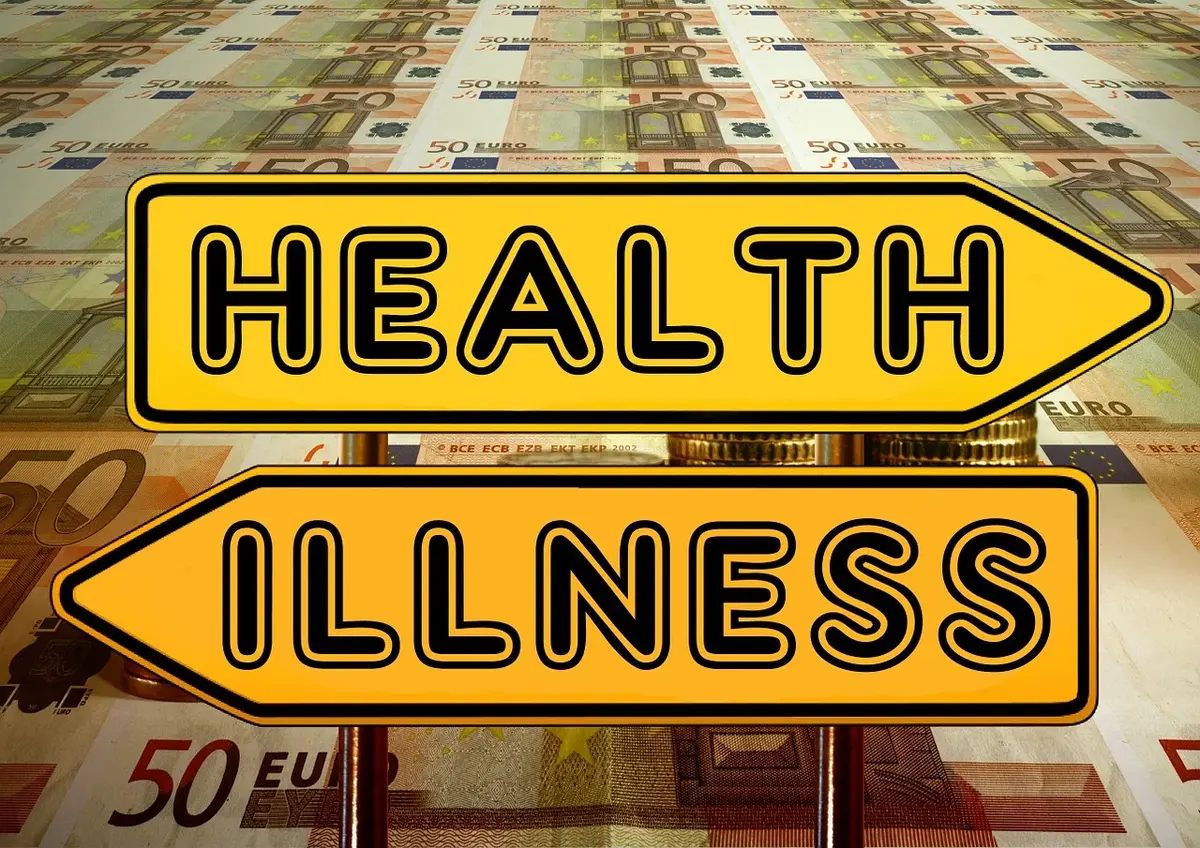A Comprehensive Guide to Health Insurance: What You Need to Know
Health insurance is essential for managing healthcare costs and maintaining your overall well-being. Whether it’s covering routine check-ups or unexpected medical emergencies, health insurance can significantly ease the financial burden. This guide will walk you through the basics of health insurance, how it works, different types of plans, and tips for choosing the right coverage.
What is Health Insurance?
Health insurance is a policy that helps cover the cost of medical care. By paying a portion of your medical expenses, such as doctor visits and hospital stays, health insurance can significantly reduce your out-of-pocket costs. But health insurance isn’t just for treating illnesses or injuries—it also covers preventive care, which can help you stay healthy and catch potential health issues early on.
Table: Benefits of Health Insurance
| Benefit | Description |
|---|---|
| Cost Sharing | Health insurance helps pay for medical expenses, reducing your financial burden. |
| Preventive Care | Covers routine check-ups and screenings to help maintain your health. |
| Wellness Programs | Includes programs aimed at improving overall health and well-being. |
| Peace of Mind | Knowing you’re covered in case of medical emergencies. |
| Access to Networks | Provides access to a network of doctors and hospitals at negotiated rates. |
How Does Health Insurance Work?
Health insurance is a contract between you and an insurance company. When you purchase a health insurance plan, you become a member of that plan. Each month, you pay a premium to maintain your coverage. In return, the insurance company agrees to pay for a portion of your medical expenses. How these costs are shared depends on the specific plan you choose.

Key Terms to Understand
- Premium: The amount you pay each month for your health insurance.
- Deductible: The amount you pay out-of-pocket before your insurance starts to cover costs.
- Copay: A fixed amount you pay for a covered healthcare service after you’ve paid your deductible.
- Coinsurance: Your share of the costs of a covered healthcare service, calculated as a percentage of the allowed amount for the service.
- Out-of-Pocket Maximum: The most you have to pay for covered services in a plan year.
How to Get Health Insurance
Choosing the right health insurance plan depends on several factors, including your age, health, and financial situation. Here are some common ways to obtain health insurance:
Employer-Sponsored Plans
Many people get health insurance through their employer. These plans are often subsidized by the employer, making them a cost-effective option.
Government Programs
- Medicare: For individuals over 65 or those with certain disabilities.
- Medicaid: For individuals and families with low income.
- Affordable Care Act (ACA) Plans: Available for purchase through the Health Insurance Marketplace.
Individual Plans
You can purchase health insurance directly from an insurance company or through the Health Insurance Marketplace. These plans offer flexibility and can be tailored to your specific needs.
Special Enrollment Periods
Most health insurance plans have an open enrollment period once a year when you can sign up, change, or cancel your plan. However, certain life events, such as getting married, having a baby, or losing other coverage, may qualify you for a special enrollment period outside of the standard timeframe.
Types of Health Insurance Plans
Health insurance plans come in various forms to fit different needs. Here are some common types:
Employer-Sponsored Plans
These are provided by employers and often include several plan options. Employers typically cover part of the premium, making these plans more affordable.
Government Plans
- Medicare: Federal program for people over 65 or with certain disabilities.
- Medicaid: State and federal program for low-income individuals and families.
- ACA Plans: Offered through the Health Insurance Marketplace, these plans provide comprehensive coverage and are available to individuals and families based on income.
Individual and Family Plans
These plans can be purchased directly from insurance companies or through the Health Insurance Marketplace. They offer a range of coverage options to suit different needs and budgets.
Short-Term Health Insurance
Short-term plans provide temporary coverage, typically for a few months to a year. They are designed to bridge gaps in coverage but may not cover as many services as standard plans.
Health Maintenance Organization (HMO)
HMO plans require you to choose a primary care physician (PCP) and get referrals to see specialists. These plans often have lower premiums and out-of-pocket costs but less flexibility in choosing healthcare providers.
Preferred Provider Organization (PPO)
PPO plans offer more flexibility in choosing healthcare providers and do not require referrals to see specialists. However, they usually come with higher premiums and out-of-pocket costs.
Exclusive Provider Organization (EPO)
EPO plans combine features of HMOs and PPOs. They offer a network of providers you must use for care, except in emergencies. These plans typically do not require referrals for specialists.
Point of Service (POS)
POS plans are a hybrid of HMO and PPO plans. They require a primary care physician and referrals for specialists but offer more flexibility in choosing providers.
Table: Types of Health Insurance Plans
| Plan Type | Key Features | Flexibility | Cost |
|---|---|---|---|
| HMO | Requires PCP and referrals, lower cost, less flexibility | Limited | Lower |
| PPO | No referrals needed, higher cost, more flexibility | High | Higher |
| EPO | No referrals, must use network providers, balance of cost and flexibility | Moderate | Moderate |
| POS | Requires PCP and referrals, some out-of-network coverage | Moderate | Moderate |
| Medicare | For individuals over 65 or with certain disabilities, federal program | Moderate | Varies |
| Medicaid | For low-income individuals and families, state and federal program | Limited | Lower |
| ACA Plans | Comprehensive coverage, available through Health Insurance Marketplace | High | Varies |
| Short-Term | Temporary coverage, fewer benefits | Limited | Lower |
How Much Does Health Insurance Cost?
The cost of health insurance varies based on several factors, including your age, location, lifestyle habits, and the type of plan you choose. Generally, costs include:
Premiums
Monthly payments you make to keep your health insurance active. Premiums vary widely depending on the type of plan and coverage level.
Deductibles
The amount you pay out-of-pocket for medical expenses before your insurance starts to cover costs. Plans with lower premiums often have higher deductibles and vice versa.
Copays and Coinsurance
Copays are fixed amounts you pay for specific services, like doctor visits or prescriptions. Coinsurance is a percentage of the cost of a covered service that you pay after meeting your deductible.
Out-of-Pocket Maximums
This is the maximum amount you have to pay for covered services in a plan year. Once you reach this limit, your insurance covers 100% of eligible expenses.
Table: Factors Affecting Health Insurance Costs
| Factor | Description |
|---|---|
| Age | Older individuals generally have higher premiums. |
| Location | Costs vary by region due to differences in healthcare costs and regulations. |
| Lifestyle Habits | Smoking, alcohol use, and other habits can affect premiums. |
| Plan Type | Different plans (HMO, PPO, etc.) have different cost structures. |
| Coverage Level | More comprehensive coverage generally means higher premiums. |
What Does Health Insurance Cover?
Coverage varies by plan, but many health insurance plans cover a wide range of services, including:
- Preventive Care: Routine check-ups, screenings, and immunizations.
- Prescription Drugs: Medications prescribed by your doctor.
- Hospital Stays: Costs associated with inpatient care.
- Mental Health Services: Counseling and therapy sessions.
- Specialist Visits: Visits to specialists, such as cardiologists or dermatologists.
- Emergency Services: Treatment for emergencies, such as accidents or sudden illnesses.
Reviewing Your Plan’s Coverage
Before choosing a plan, review the Summary of Benefits and Coverage (SBC). This document outlines what is covered, partially covered, or not covered under your health plan. It’s essential to understand this information to avoid unexpected costs.
Table: Common Health Insurance Coverages
| Service | Description |
|---|---|
| Preventive Care | Check-ups, screenings, immunizations. |
| Prescription Drugs | Medications prescribed by a healthcare provider. |
| Hospital Stays | Costs for inpatient care and treatment. |
| Mental Health Services | Therapy, counseling, and psychiatric services. |
| Specialist Visits | Visits to healthcare specialists. |
| Emergency Services | Treatment for urgent and emergency medical situations. |
Choosing the Right Health Insurance Plan
Selecting the right health insurance plan can be challenging. Here are some tips to help you make an informed decision:
Assess Your Healthcare Needs
Consider your current health, any ongoing medical conditions, and the types of healthcare services you use frequently.
Compare Plan Options
Look at different plan types (HMO, PPO, EPO, POS) and compare their benefits, costs, and network of providers. Use online comparison tools to make this process easier.
Check Provider Networks
Ensure your preferred doctors and hospitals are in the plan’s network to avoid higher out-of-pocket costs.
Review Costs
Examine premiums, deductibles, copays, coinsurance, and out-of-pocket maximums to understand the overall cost of each plan.
Consider Additional Benefits
Some plans offer extra benefits, such as wellness programs, telehealth services, or dental and vision coverage. These can add value to your plan.
Conclusion
Health insurance is a vital part of managing healthcare costs and ensuring access to necessary medical services. Understanding how health insurance works, the different types of plans available, and how to choose the right coverage can help you make informed decisions about your health and financial well-being.
FAQs
Q: What is the difference between an HMO and a PPO? A: An HMO (Health Maintenance Organization) requires you to choose a primary care physician and get referrals to see specialists, usually at a lower cost. A PPO (Preferred Provider Organization) offers more flexibility in choosing healthcare providers and does not require referrals, but typically has higher costs.
Q: Can I get health insurance if I have a pre-existing condition? A: Yes, under the Affordable Care Act (ACA), health insurance plans cannot deny coverage or charge higher premiums based on pre-existing conditions.
Q: How do I know if my doctor is in my plan’s network? A: Most health insurance plans provide an online directory of in-network providers. You can also contact your doctor’s office or your insurance company to confirm network status.
Q: What happens if I need medical care while traveling? A: Coverage for medical care while traveling depends on your specific health insurance plan. Some plans offer nationwide or even international coverage, while others may have more limited networks.
Q: What should I do if I miss the open enrollment period? A: If you miss the open enrollment period, you may still be able to get coverage if you qualify for a special enrollment period due to certain life events, such as marriage, birth of a child, or loss of other coverage.

